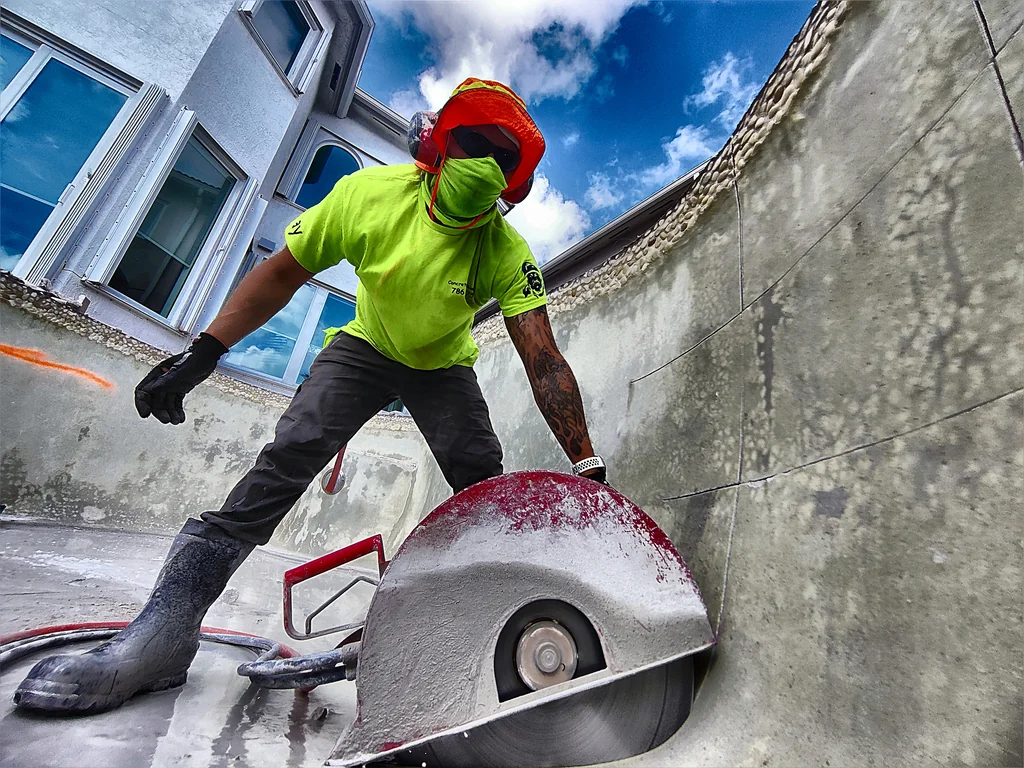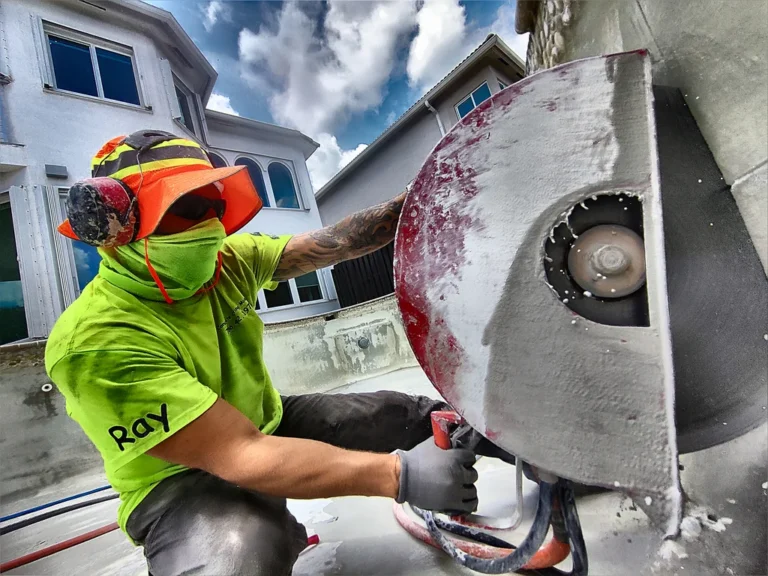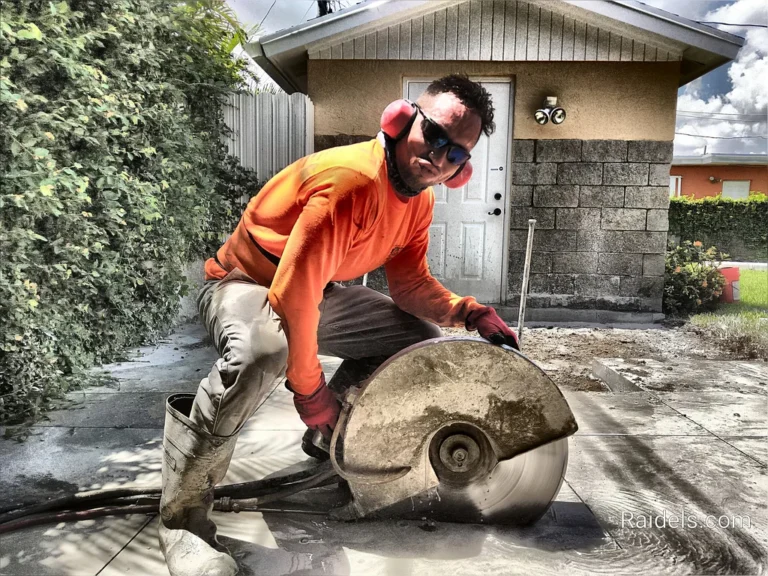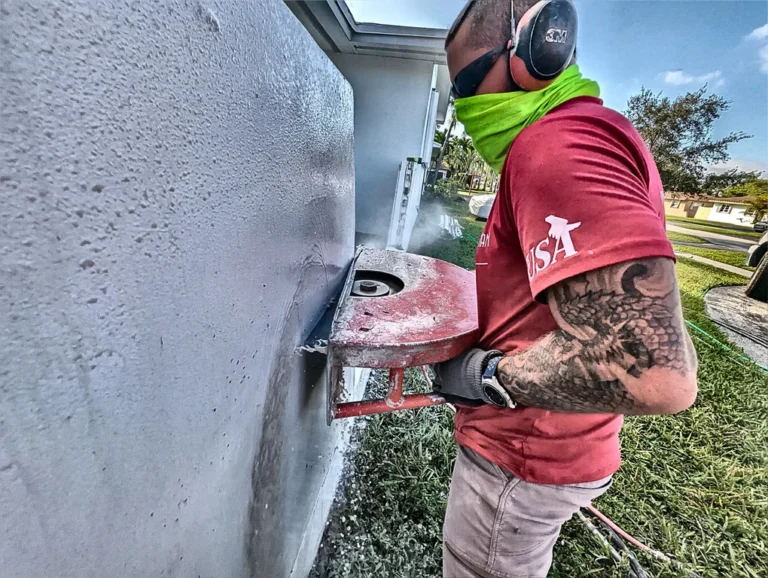A swimming pool can be a centerpiece of Miami living, offering cool relief on hot days. But sometimes, circumstances change. Perhaps the maintenance costs have become burdensome, safety is a concern with young children, the pool is outdated and requires extensive repairs, or maybe you simply dream of reclaiming that space for a lush garden, patio extension, or accessory dwelling unit. Whatever the reason, pool removal is a viable option, transforming your backyard possibilities.
This guide explores the process, considerations, and methods involved in swimming pool demolition and removal, specifically tailored for Miami homeowners. It’s a significant undertaking that involves much more than simply draining the water; it requires careful planning, heavy equipment, and often, professional concrete cutting and demolition expertise.
Why Consider Pool Removal in Miami?
Homeowners opt for pool removal for various reasons:
- High Maintenance Costs: Ongoing expenses for chemicals, cleaning, electricity, and inevitable repairs can add up significantly.
- Safety Concerns: Unused or unfenced pools can pose risks, especially for families with small children or pets.
- Outdated Design/Disrepair: An old, cracked, or leaking pool might be more costly to renovate than to remove. Perhaps you want to reshape you pool but find removal a better starting point.
- Reclaiming Space: Removing a pool frees up valuable yard space for landscaping, outdoor living areas, gardens, or home extensions.
- Selling Property: While pools appeal to some buyers, others see them as a liability. Removing an unwanted pool might broaden market appeal.
Pool Demolition Methods: Partial vs. Full Removal
There are two primary approaches to pool demolition:
1. Partial Removal (Fill-In Method)
This is often the more common and less expensive option.
- Process: The top portion (typically 18-36 inches) of the pool shell (including the coping and upper walls) is demolished and broken up. Holes are punched in the bottom of the remaining pool shell to allow for drainage. The demolished material (concrete/gunite) is often used as part of the backfill, supplemented with additional engineered fill (soil, gravel).
- Pros: Lower upfront cost, faster completion time.
- Cons: The remaining shell might affect future deep landscaping or construction (e.g., planting large trees, building structures with deep foundations). Some municipalities may have restrictions or disclosure requirements for future property sales regarding partially removed pools. Addresses the question “can you just fill a pool with dirt“, but highlights it’s more complex than just dirt – proper drainage and fill are key. See the pros and cons of filling in a pool.
- Miami Considerations: Drainage is critical due to Miami’s high water table. Ensuring proper holes are created in the remaining shell and using appropriate fill material prevents creating a “bathtub” effect underground.

2. Full Removal
This method involves demolishing and removing the entire pool structure.
- Process: The entire pool shell (walls and floor) and surrounding deck are broken up and hauled away. The cavity is then backfilled entirely with engineered fill and compacted in layers.
- Pros: Completely removes the old structure, leaving no limitations on future land use. Generally preferred by municipalities and potentially better for property resale value as there’s no buried structure.
- Cons: Significantly higher cost due to extensive demolition, debris hauling, and the larger volume of fill required. Takes longer to complete.
- Miami Considerations: Requires careful management of heavy equipment access and significant debris disposal, adhering to local Miami-Dade regulations.
The Pool Removal Process: Step-by-Step
Regardless of the method chosen, the general process involves several key stages:
1. Planning and Permitting
- Assessment: Evaluate the pool’s construction (concrete, vinyl liner, fiberglass), size, location, and accessibility.
- Permits: Pool demolition almost always requires permits from the relevant Miami-Dade County or city department. Professionals handle this process, ensuring compliance with local codes regarding demolition methods, backfill requirements, and inspections.
- Utility Locates: Before any digging or demolition, all underground utilities (gas, water, electric, sewer, cable) must be located and marked to prevent dangerous and costly damage.
2. Draining and Disconnection
- Draining: The pool must be completely drained according to local environmental regulations (often requiring discharge into the sanitary sewer, not storm drains).
- Disconnection: All electrical, plumbing, and gas lines connected to the pool equipment must be safely disconnected and capped off by qualified technicians.
3. Demolition Phase
This is where the heavy work begins, requiring specialized equipment and skilled operators.
- Deck Removal: Often the first step is the how to cut and remove a pool deck process. This typically involves saw cutting the concrete deck into manageable sections using slab saws, then breaking and removing the pieces. Goodbye pool hello possibilities expert pool deck removal in miami is a major part of the job.
- Shell Demolition:
- Concrete/Gunite Pools: Requires heavy equipment like excavators with hydraulic breakers (hammers) or skid steers (removing a pool with a bobcat). Precision concrete cutting techniques might be used initially to section the shell or create clean edges if only partial removal is planned. Operators performing concrete breaking need to control debris.
- Fiberglass/Vinyl Liner Pools: The shell or liner is cut up and removed, along with any supporting structure (often sand or concrete footings).
- Debris Removal: All demolished material (concrete, steel rebar, fiberglass, liner, pipes) must be loaded and hauled away for proper disposal or recycling. This requires dump trucks and adherence to waste management regulations.
4. Backfilling and Compaction
This is arguably the most critical phase for ensuring long-term stability.
- Material: Engineered fill (usually a mix of soil, sand, and gravel) is brought in. Using unsuitable fill (like organic soil or random debris) can lead to significant settling later.
- Layering & Compaction: The fill material must be added in layers (lifts), typically 6-12 inches deep. Each layer must be thoroughly compacted using mechanical tampers or rollers to prevent future sinking or voids. This is crucial to avoid creating a depression where the pool used to be. Proper compaction ensures the ground can support future landscaping or structures.
5. Final Grading and Site Restoration
- Grading: The filled area is graded to match the surrounding yard, ensuring proper drainage away from any structures.
- Topsoil & Seeding/Sodding: Often, a layer of topsoil is added, and the area is seeded or sodded to establish new lawn, completing the transformation.

Why Hire Professional Pool Removal Services?
While DIY might seem tempting for cost savings, pool removal is complex and hazardous. Professionals offer:
- Expertise & Experience: They understand different pool types, demolition techniques, soil mechanics, and compaction requirements.
- Proper Equipment: They have access to heavy machinery (excavators, breakers, skid steers, dump trucks) and specialized concrete cutting tools.
- Safety: Professionals are trained in safe equipment operation, debris handling, and managing potential hazards. They carry appropriate insurance.
- Efficiency: Experience and equipment allow them to complete the job much faster and more effectively than a DIY approach.
- Compliance: They handle permits, ensure adherence to Miami-Dade codes (especially regarding drainage and backfill), and manage proper debris disposal.
- Structural Awareness: They understand how demolition might impact nearby structures and take precautions.
Attempting DIY concrete demolition on this scale often leads to unforeseen problems, safety risks, improper compaction causing future issues, and potential fines for non-compliance. Entrusting the job to qualified pool demolition experts ensures it’s done right the first time.
Ready to reclaim your backyard? Contact experienced professionals for an assessment and detailed quote tailored to your specific Miami property.



